Science
'It's almost shameful to want to have children'
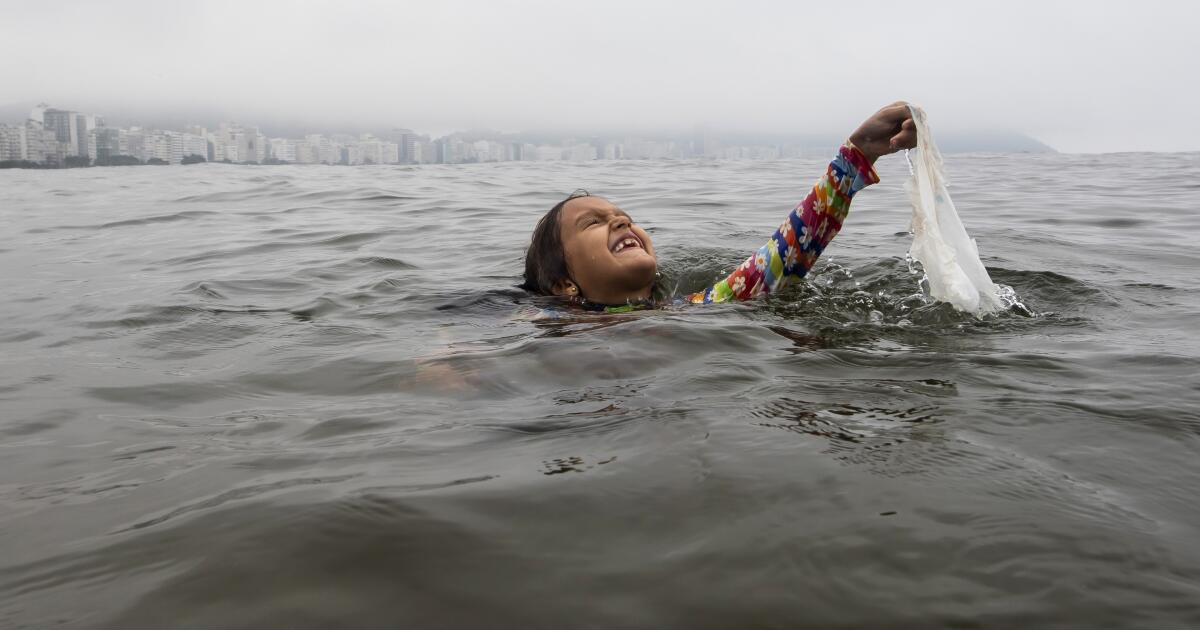
Jade S. Sasser is an associate professor in the Department of Gender & Sexuality Studies at UC Riverside. Her research explores the relationships between reproductive justice, women’s health and climate change, and she’s the host of the podcast “Climate Anxiety and the Kid Question.” The following excerpt is from her newest book, “Climate Anxiety and the Kid Question: Deciding Whether to Have Children in an Uncertain Future,” which was published earlier this year.
The kid question. It comes up over and over again in the form of family questions and expectations. It arises in conversations with peers, partners and new dates. It appears in the quiet times, sitting in the spaces where our wildest hopes and deepest fears collide.
American society feels more socially and politically polarized than ever. Is it right to bring another person into that?
In 2021 and 2022, I conducted a series of interviews on this topic with millennials and members of Generation Z, all of them people of color. Some grew up in low-income families and neighborhoods while others were from the middle- or upper-middle class. Some of them identify as queer, or their close family members and friends do, which shapes their sensitivity to discrimination against gay, lesbian, bisexual, and transgender people.
These interviewees have more climate change knowledge than most people do. All of them are college-educated; most of them either grew up or have lived for some time in Southern California; and most have taken environmental studies classes, either as undergrads or in graduate school.
Their experiences as members of marginalized groups have shaped their experiences with climate emotions like anxiety, fear, and trauma — as well as hope and optimism. Paying closer attention to those emotions and mental health in communities of color, including how they shape reproductive plans, will become an increasingly important component of climate justice in the United States.
Bobby
Bobby, 22, considers himself an environmentalist. He recently graduated from college in Southern California with a degree in sustainability studies. His family is Guatemalan American.
Bobby is both confident that he will become a parent one day and also certain that he won’t bring his own biological kids into the world. His thoughts about the environment, the future, and parenting come into sharp relief through his current job at a restaurant, where he is unhappily employed. “There’s so much being wasted that could be returned to the earth.”
He connects these waste issues to carbon emissions and how he feels about having children. For Bobby, this is an ethical issue, a reason why he should not have biological children:
“I’m worried about what they would have to deal with growing up. I was already a young adult when I started to think about these things, but for them, at a young age they’re going to have to think about the environment and the fears that come along with pollution.
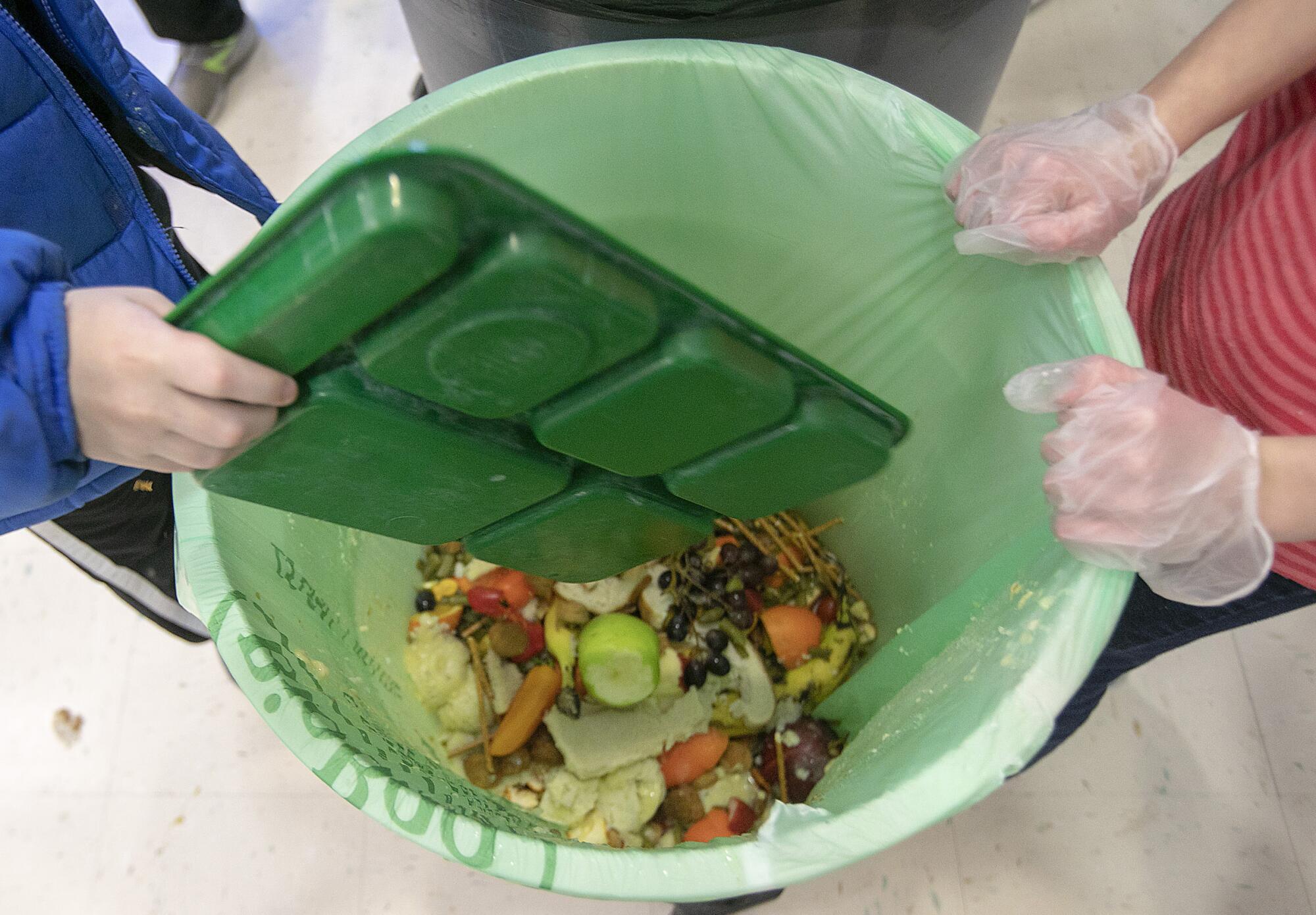
Students discard food into a bin as part of a lunch waste composting program at an elementary school.
(Associated Press)
“This is why I’m leaning more toward a foster kid, and maybe eventually adopting them. Because it wasn’t my choice to have that kid, but I can help guide them to have a better life. … The environment is really the deciding factor for me.”
Although he always wanted to have children, his thoughts about fostering arose from taking environmental studies classes. “Going into college was the first time I was exposed to this information firsthand, and I realized for the first time, it’s not all rainbows and sunshine. I had never learned before … about things like food waste and carbon emissions. And that’s when the gears started turning in my head about the future and what I wanted to do.”
Victoria
Victoria is the same age as Bobby; she graduated from the same university and is also from an immigrant family, though hers is from Ghana. In Victoria’s house there were four siblings and half a dozen cousins who were always around. As a result, Victoria really cherished the closeness and security of a large family.
“I guess in the future, I would love to have children,” she says. “I’d really like to have a big family. I grew up in a big family, so it’s nice.”
Victoria is interested in perhaps adopting or fostering, and she also connects the desire for this to her undergraduate education in environmental topics.
“I got a degree in sustainability, and I’ve always questioned bringing people into an environment [where] so much is going on politically, socially, health-wise, all of that. I always thought I wanted to give birth, but the more I look at foster care, I realize that I don’t need to physically have children to experience being a mom… . It’s a little selfish on my end to think I’m going to have all these kids when there are already kids in the world who would probably make me a better parent.”
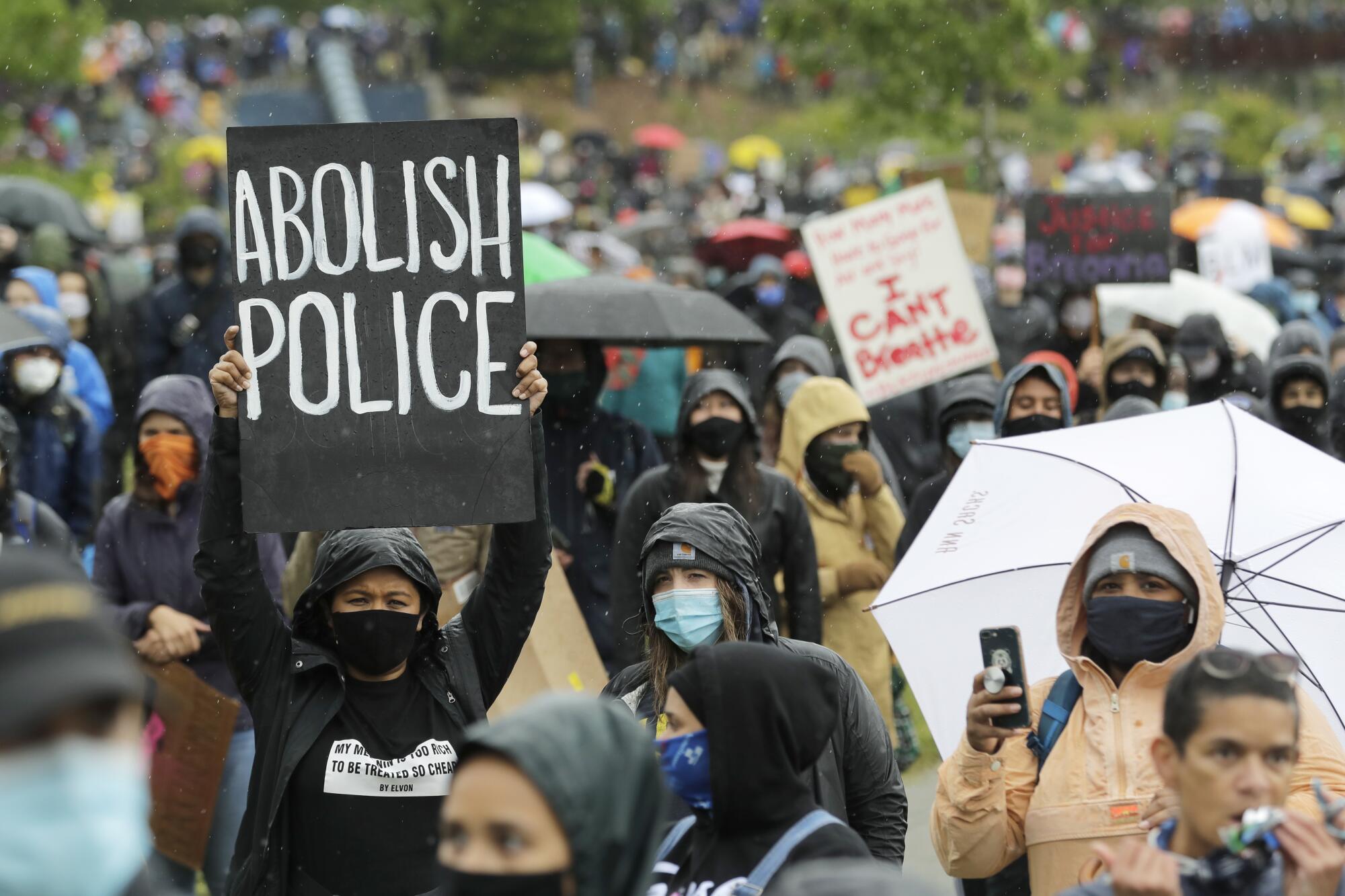
Protesters hold a “silent march” against racial inequality and police brutality that was organized by Black Lives Matter Seattle-King County in June 2020.
(Associated Press)
Victoria’s concerns about biological children are multifaceted: She worries about the future of healthcare access, wealth inequality, and whether her children would receive a low-quality education or be racially tracked in public schools. Ultimately it comes back to how racial inequality interacts with other social challenges to heighten her own sense of vulnerability and that of her potential future children.
“If I have children, they will be Black children,” she says. “It isn’t self-hatred. I love being Black, but the things I’ve gone through I wouldn’t wish on other children.”
This is a frequent topic of conversation among Victoria and her friends. They talk about whether they want to have children in the future. Most of them do not.
That feeling of being traumatized by an awareness of ongoing racial inequality shaped the perspectives of a group of Black women I spoke to. They were different ages, from their 20s to their late 30s, and they ranged from just starting out to having established careers. However, each perceived herself, and the prospect of becoming a mother, through the lens of vulnerability.
Rosalind
Rosalind, 38, is a Black woman of Caribbean origin living in Southern California. She has a graduate degree, a job as a scientific researcher, and is settled in a community she likes. Nevertheless, thoughts of the future are a heavy, ever-present burden. When I ask if there is one issue that feels like the primary reason for not having kids, she answers decisively: racism.
“With all of the anti-Black violence, and the police violence against us, it just seems so unsafe. And I see so many of my friends who do have children that are constantly stressed because of this, especially the ones who have teenage boys who are taller than average. They send their kids out there and then just spend their time worrying about whether their child is going to be targeted or harassed in some way, or potentially killed. I just don’t think I have the disposition to put up with that kind of stress.”
Melanie
Melanie, a 26-year-old Native American woman, was raised on the Navajo reservation and in Southern California. She idealizes having a big, happy family, but there are aspects of the world that give her pause, so she struggles with whether it’s morally OK to have children.
“ I think I may not have children although I do want them,” she notes. “Just because, with all of the things we see going on in the world, it seems unfair to bring someone into all of this against their will.”
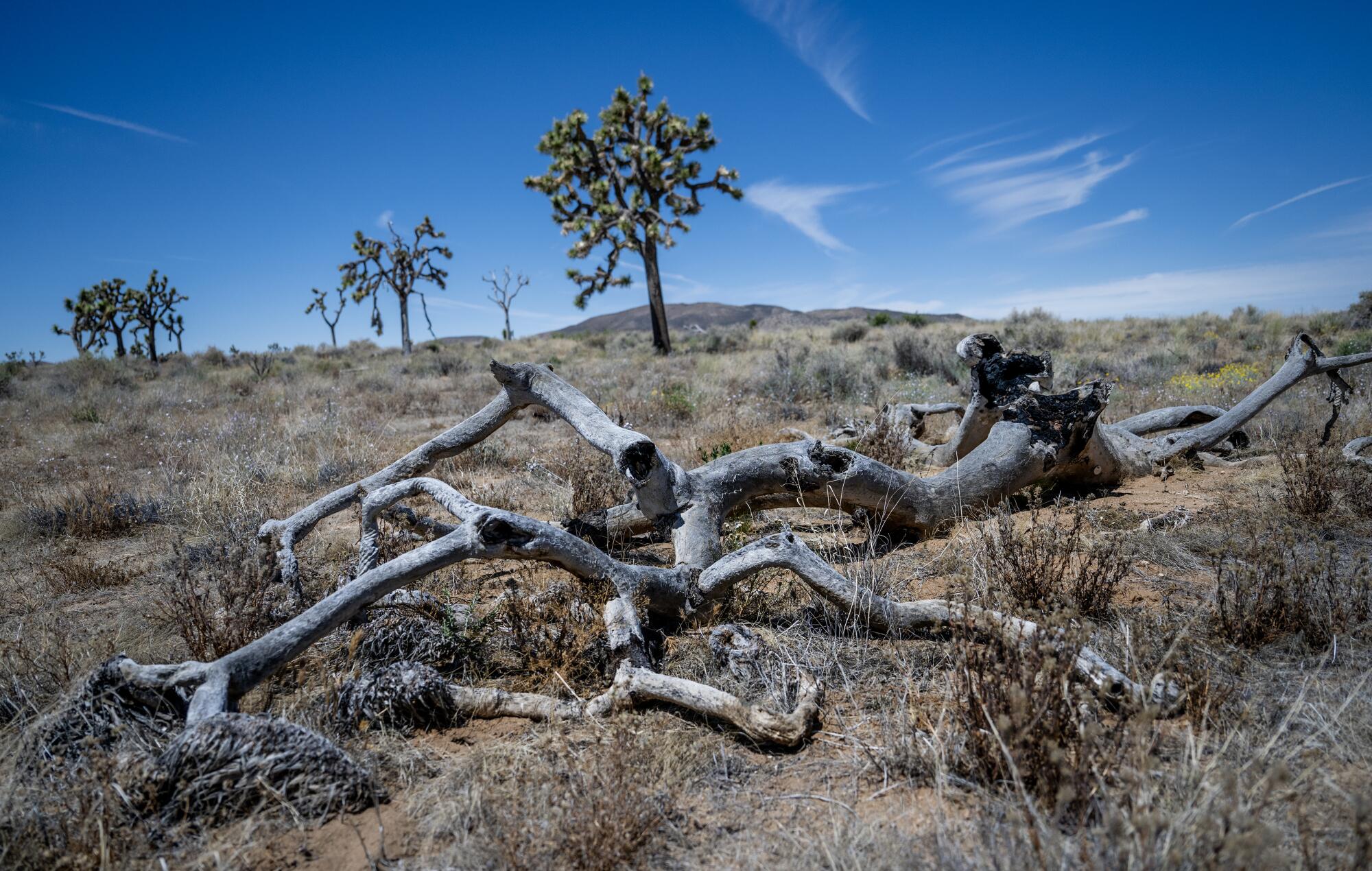
Drought last year took a toll on Joshua trees at Joshua Tree National Park.
(Gina Ferazzi / Los Angeles Times)
Melanie’s feelings about climate change include a general sense of powerlessness and lack of control over other people’s actions, which directly translates into her fears about parenthood: “With climate change, we’re the driving force of things breaking down, but then also, the planet’s going to do what the planet’s going to do. … So … it almost feels, like, kind of shameful to want to have children.”
Juliana
Juliana, a 23-year-old Mexican American woman, is strongly aware of negative peer pressure from friends. She recently graduated from art school, and her friend circle is mainly composed of queer and transgender, anti-establishment artists. Most of them have no intention of having children of their own, which seeps into conversations with Juliana.
Her friends cite environmental and mental health concerns. Their anxiety tells them that they can’t properly take care of themselves, much less a child. They also struggle, as trans and nonbinary people, with the issues of access to fertility centers and the need to use reproductive technologies that feel out of reach.
Juliana feels that it may be unfair for her to consider having biological children. She tells me that these feelings are not entirely separate from how she feels about what her child’s racial upbringing would be.
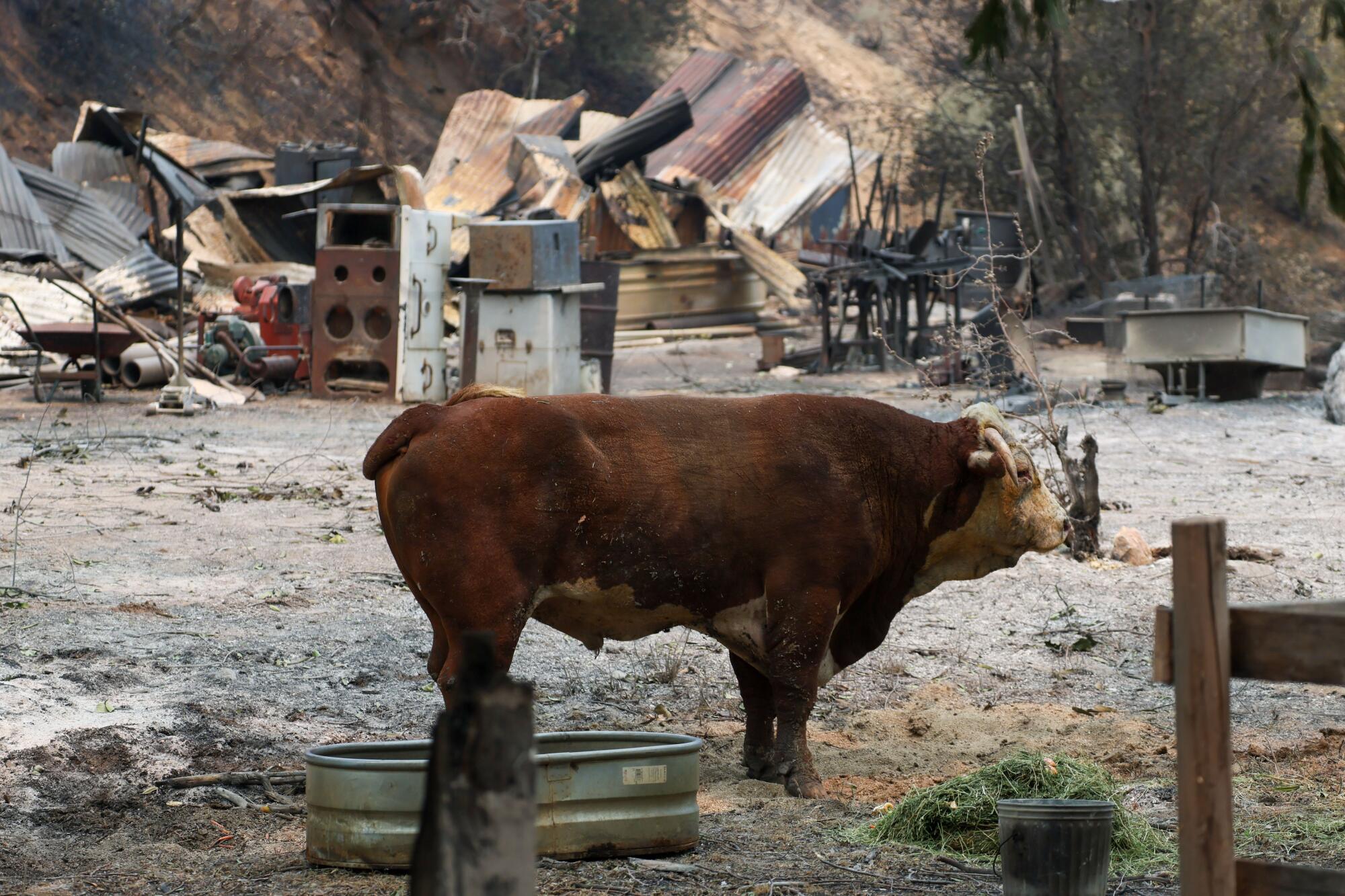
The Borel fire devastated Havilah, a historic mining town in Kern County, in late July.
(Robert Gauthier / Los Angeles Times)
As a dark-skinned Mexican woman, she regularly experienced racism growing up in Southern California— and given that her husband is white, any child she might birth would be biracial, which raises questions about whether and how they would navigate the world differently than she has. But Juliana is an optimist, and she does plan to have one child.
Elena
I spoke to several young women who are addressing the kid question with their dates, potential partners, and long-term boyfriends. Elena, 22, is one of the most certain people I’ve met: She is not having children.
She’s from a Salvadoran immigrant family in which she is one of four children, while her mother was one of 12. Her certainty that stems from both life experiences and climate fears:
“Me being interested in environmental policy cemented my decision to not have kids, but I do have some personal things that I’ve gone through in life that I wouldn’t want my kids going through, like not having a dad. So I feel like it’s best if I just focus on myself and take care of my mom. … I can also spend my time and energy focusing on someone that’s already here.”
Elena brings this conversation up on every first date with any new guy she sees. Given that most of them expect to have families in the future, Elena feels strongly that she does not want a relationship. This has been discouraging for her, but her mind is made up.
Like some of the other people I interviewed, Elena’s feelings about climate change were sparked by environmental studies classes. She says, “[I] started feeling like having kids is definitely not a sustainable thing to do. … I don’t want them to grow up and have to leave their home because of sea level rise. Or be worried because of really weird weather patterns.
“I know that things aren’t going to get better. So why would I want to put a child through that? Even when my sister gave birth to my nephew, I was like, Why? They’re gonna go through so much.”
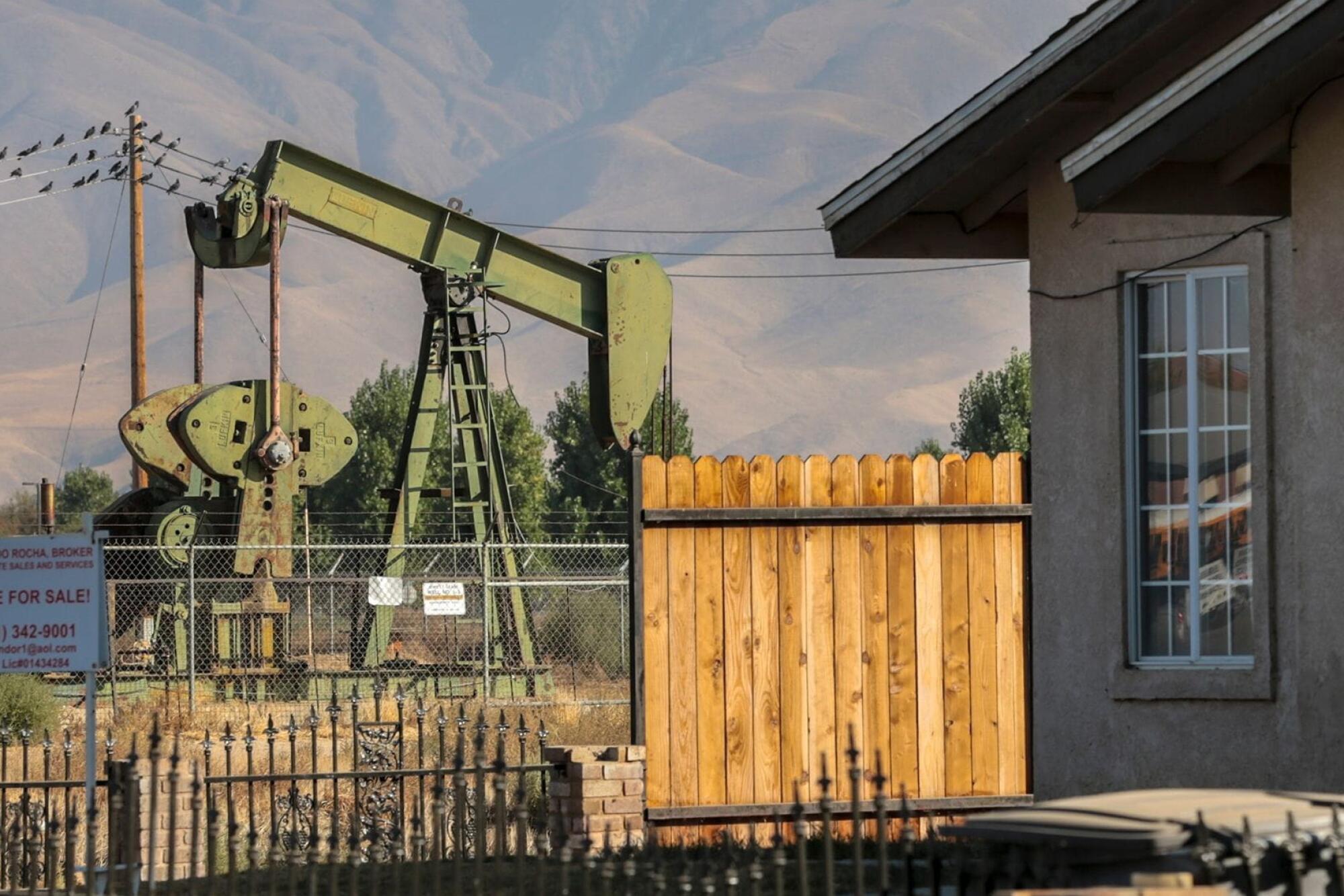
A pump station sits idle near homes in Arvin, Calif., where toxic fumes from a nearby well made residents sick and forced evacuations in November 2019.
(Robert Gauthier / Los Angeles Times)
Veronica
Elena’s close friend Veronica, a 22-year-old from Los Angeles, manages the cultural expectations of a large, immigrant family from Guatemala. “Because of my Hispanic background people are always like, when are you gonna have children, of course you’re having children. It is what it is, right? But now that I’m an adult, I think about it differently. Would my child have a good quality of life? Will they be able to survive?”
She wants to have a child, “but I also want to be mindful of that child. Because it’s not just about having it, it’s about raising it. And being able to sustain it as well.”
For Veronica the everyday environmental concerns link directly to the larger issues shaping climate change: power, who has it, and who doesn’t. Though seemingly distant, intergenerational power imbalances — and older generations’ legacies of generating the emissions that have caused climate change — make her feel that it is unfair for people her age to have to ask the kid question.
She says: “I just think that people in power, whether they believe in climate change or not, it’s not beneficial for them to really do something about it. Because they’re older, it’s not going to affect them the way it affects us. … They have so much money and power it doesn’t affect them the same way. They can buy protection from what the rest of us are going to have to deal with.”
Although these interviews focused primarily on the challenges young people face as they approach reproductive questions, many of them still wanted families of their own. For those who were certain about having children, the reasons were emotional: love, joy, happiness, and hope.
Bobby was clear that he doesn’t plan on having biological children, but he was happy about the thought of fostering in the future and was particularly excited at the thought of his sister having kids.
“I would love to be an uncle,” he said. “Just seeing the next generation, the reason why I’ve been more optimistic about having a foster child of my own, is about being able to see them grow.”
Victoria was excited at the prospect of adopting multiple children.
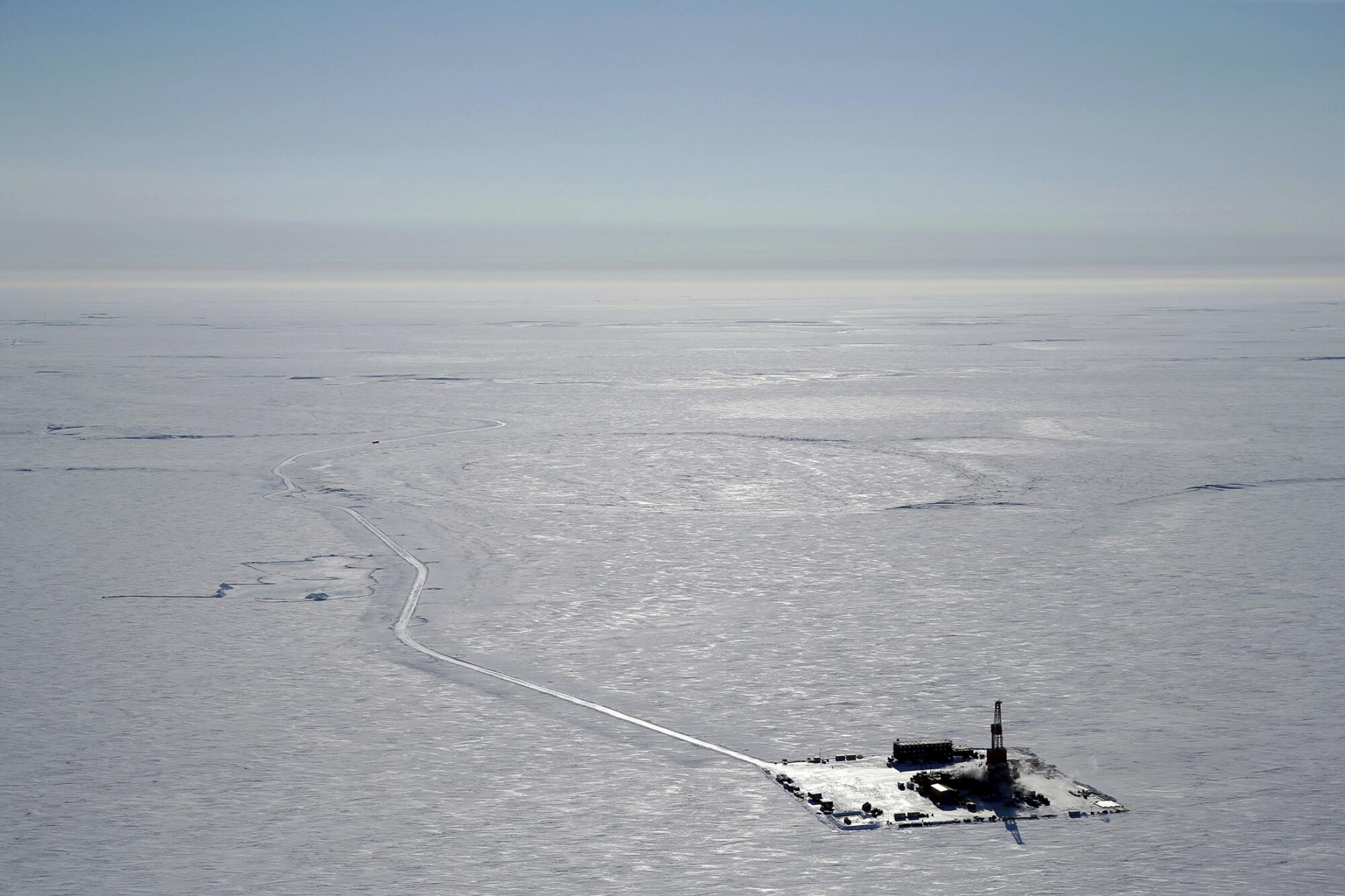
This 2019 aerial photo provided by ConocoPhillips shows an exploratory drilling camp at the proposed site of the Willow oil project on Alaska’s North Slope.
(Associated Press)
“I want to create a space where kids have loving, supportive parents. My parents aren’t perfect, but I know that I grew up in a loving home where they would do anything for my success and protection, and I want to create that for someone else.”
Her sentiments were echoed by Melanie, whose experience living in a racially and gender-diverse family inspires her to want to recreate the same.
She said: “When I look within my own family, we’re very diverse. We’re Black, we’re white, we’re Native American. We’re straight, we’re queer, we’re nonbinary. And we still have compassion for each other and that kind of spills over into compassion for other people that we don’t know. And I think, like, I don’t want to quit. I don’t want to let the bad things dictate how I make my decisions
“The idea of bringing someone into this world and growing them with compassion and love, and making sure they grow up knowing to stand up for other people and stand up for what’s right, that’s a little glimmer of hope.”

Science
Southern California mountain lions recommended for threatened status

The California Department of Fish and Wildlife has recommended granting threatened species status to roughly 1,400 mountain lions roaming the Central Coast and Southern California, pointing to grave threats posed by freeways, rat poison and fierce wildfires.
The determination, released Wednesday, is not the final say but signals a possibility that several clans of the iconic cougars will be listed under the California Endangered Species Act.
It’s a move that supporters say would give the vulnerable animals a chance at recovery, but detractors have argued would make it harder to get rid of lions that pose a safety risk to people and livestock.
The recommendation was “overdue,” Charlton Bonham, director of the state wildlife department, said during a California Fish and Game Commission meeting.
It arrives about six years after the Center for Biological Diversity and Mountain Lion Foundation petitioned the commission to consider listing a half-dozen isolated lion populations that have suffered from being hit by cars, poisoned by rodenticides and trapped by development.
The following year, in 2020 the Commission found the request might be warranted, giving the lions temporary endangered species protections as “candidates” for listing. It also prompted the state wildlife department to put together a report to inform the commission’s final decision.
The next step is for state wildlife commissioners to to vote on the protections, possibly in February.
Brendan Cummings, conservation director for Center for Biological Diversity, hailed the moment as “a good day, not just for mountain lions, but for Californians.”
If the commissioners adopt the recommendation, as he believes they will, then the “final listing of the species removes any uncertainty about the state’s commitment to conserving and recovering these ecologically important, charismatic and well-loved species that are so much a part of California.”
The report recommends listing lions “in an area largely coinciding” with what the petitioners requested, which includes the Santa Ana, San Gabriel, San Bernardino, Santa Monica, Santa Cruz and Tehachapi mountains.
It trims off portions along the northern and eastern borders of what was proposed, including agricultural lands in the Bay Area and a southeastern portion of desert — areas where state experts had no records of lions, according to Cummings.
Officials in the report note that most of the lion groups proposed for listing are contending with a lack of gene flow because urban barriers keep them from reaching one another.
In Southern California, lions have shown deformities from inbreeding, including kinked tails and malformed sperm. There’s an almost 1 in 4 chance, according to research, that mountain lions could become extinct in the Santa Monica and Santa Ana mountains within 50 years.
The late P-22 — a celebrity mountain lion that inhabited Griffith Park – personified the tribulations facing his kind. Rat poison and car collisions battered him from the inside out. He was captured and euthanized in late 2022, deemed too sick to return to the wild because of injuries and infection.
For some species, protections come in the form of stopping chainsaws or bulldozers. But imperiled lions, Cummings said, need their habitats stitched together in the form of wildlife crossings — such as the gargantuan one being built over the 101 Freeway in Agoura Hills. He added that developments that could restrict their movement should get more scrutiny under the proposed protections.
Critics of the effort to list lion populations have said that it will stymie residential and commercial projects.
California is home to roughly 4,170 mountain lions, according to the recent report, but not all are equal in their struggle.
Many lion populations, particularly in northwest coastal forests, are hearty and healthy.
Protections are not being sought for those cats. Some, in fact, would like to see their numbers reduced amid some high-profile conflicts.
Bonham, the director of the state Department of Fish and Wildlife, spoke to concerns about public safety at the recent meeting, alluding to the tragic death of young man who was mauled by a cougar last year in Northern California.
“These are really delicate issues and the conversation I know in the coming years is going to have to grapple with all that,” said Bonham, who will be stepping down this month after nearly 15 years in his role.
California’s lions already enjoy certain protections. In 1990, voters approved a measure that designated them a “specially protected species” and banned hunting them for sport.
Science
California’s last nuclear plant clears major hurdle to power on

California environmental regulators on Thursday struck a landmark deal with Pacific Gas & Electric to extend the life of the state’s last remaining nuclear power plant in exchange for thousands of acres of new land conservation in San Luis Obispo County.
PG&E’s agreement with the California Coastal Commission is a key hurdle for the Diablo Canyon nuclear plant to remain online until at least 2030. The plant was slated to close this year, largely due to concerns over seismic safety, but state officials pushed to delay it — saying the plant remains essential for the reliable operation of California’s electrical grid. Diablo Canyon provides nearly 9% of the electricity generated in the state, making it the state’s single largest source.
The Coastal Commission voted 9-3 to approve the plan, settling the fate of some 12,000 acres that surround the power plant as a means of compensation for environmental harm caused by its continued operation.
Nuclear power does not emit greenhouse gases. But Diablo Canyon uses an estimated 2.5 billion gallons of ocean water each day to absorb heat in a process known as “once-through cooling,” which kills an estimated two billion or more marine organisms each year.
Some stakeholders in the region celebrated the conservation deal, while others were disappointed by the decision to trade land for marine impacts — including a Native tribe that had hoped the land would be returned to them. Diablo Canyon sits along one of the most rugged and ecologically rich stretches of the California coast.
Under the agreement, PG&E will immediately transfer a 4,500-acre parcel on the north side of the property known as the “North Ranch” into a conservation easement and pursue transfer of its ownership to a public agency such as the California Department of Parks and Recreation, a nonprofit land conservation organization or tribe. A purchase by State Parks would result in a more than 50% expansion of the existing Montaña de Oro State Park.
PG&E will also offer a 2,200-acre parcel on the southern part of the property known as “Wild Cherry Canyon” for purchase by a government agency, nonprofit land conservation organization or tribe. In addition, the utility will provide $10 million to plan and manage roughly 25 miles of new public access trails across the entire property.
“It’s going to be something that changes lives on the Central Coast in perpetuity,” Commissioner Christopher Lopez said at the meeting. “This matters to generations that have yet to exist on this planet … this is going to be a place that so many people mark in their minds as a place that transforms their lives as they visit and recreate and love it in a way most of us can’t even imagine today.”
Critically, the plan could see Diablo Canyon remain operational much longer than the five years dictated by Thursday’s agreement. While the state Legislature only authorized the plant to operate through 2030, PG&E’s federal license renewal would cover 20 years of operations, potentially keeping it online until 2045.
Should that happen, the utility would need to make additional land concessions, including expanding an existing conservation area on the southern part of the property known as the “South Ranch” to 2,500 acres. The plan also includes rights of first refusal for a government agency or a land conservation group to purchase the entirety of the South Ranch, 5,000 acres, along with Wild Cherry Canyon — after 2030.
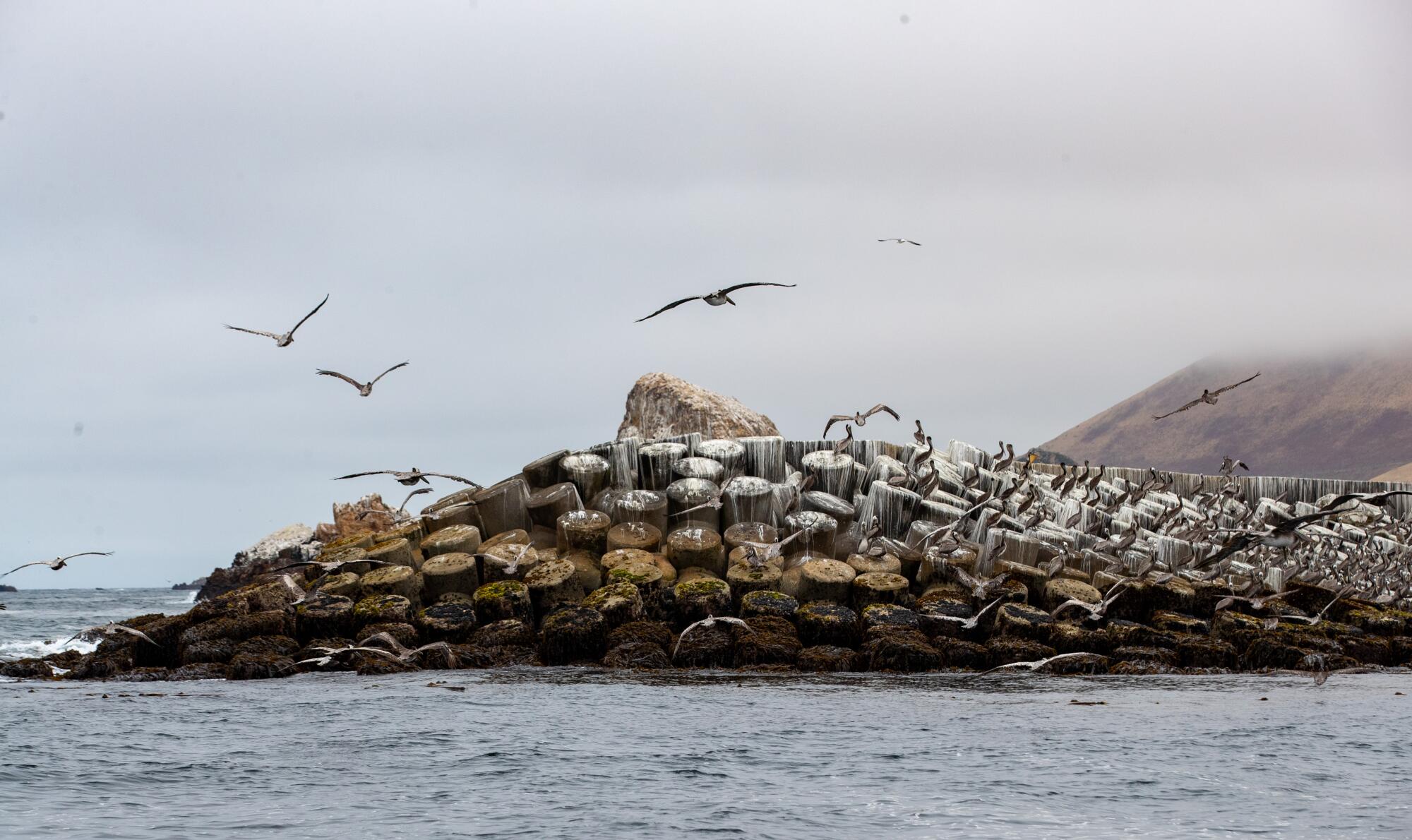
Pelicans along the concrete breakwater at Pacific Gas and Electric’s Diablo Canyon Power Plant
(Brian van der Brug/Los Angeles Times)
Many stakeholders were frustrated by the carve-out for the South Ranch, but still saw the agreement as an overall victory for Californians.
“It is a once in a lifetime opportunity,” Sen. John Laird (D-Santa Cruz) said in a phone call ahead of Thursday’s vote. “I have not been out there where it has not been breathtakingly beautiful, where it is not this incredible, unique location, where you’re not seeing, for much of it, a human structure anywhere. It is just one of those last unique opportunities to protect very special land near the California coast.”
Others, however, described the deal as disappointing and inadequate.
That includes many of the region’s Native Americans who said they felt sidelined by the agreement. The deal does not preclude tribal groups from purchasing the land in the future, but it doesn’t guarantee that or give them priority.
The yak titʸu titʸu yak tiłhini Northern Chumash Tribe of San Luis Obispo County and Region, which met with the Coastal Commission several times in the lead-up to Thursday’s vote, had hoped to see the land returned to them.
Scott Lanthrop is a member of the tribe’s board and has worked on the issue for several years.
“The sad part is our group is not being recognized as the ultimate conservationist,” he told The Times. “Any normal person, if you ask the question, would you rather have a tribal group that is totally connected to earth and wind and water, or would you like to have some state agency or gigantic NGO manage this land, I think the answer would be, ‘Hey, you probably should give it back to the tribe.’”
Tribe chair Mona Tucker said she fears that free public access to the land could end up harming it instead of helping it, as the Coastal Commission intends.
“In my mind, I’m not understanding how taking the land … is mitigation for marine life,” Tucker said. “It doesn’t change anything as far as impacts to the water. It changes a lot as far as impacts to the land.”

Montaña de Oro State Park.
(Christopher Reynolds / Los Angeles Times)
The deal has been complicated by jurisdictional questions, including who can determine what happens to the land. While PG&E owns the North Ranch parcel that could be transferred to State Parks, the South Ranch and Wild Cherry Canyon are owned by its subsidiary, Eureka Energy Company.
What’s more, the California Public Utilities Commission, which regulates utilities such as PG&E, has a Tribal Land Transfer Policy that calls for investor-owned power companies to transfer land they no longer want to Native American tribes.
In the case of Diablo Canyon, the Coastal Commission became the decision maker because it has the job of compensating for environmental harm from the facility’s continued operation. Since the commission determined Diablo’s use of ocean water can’t be avoided, it looked at land conservation as the next best method.
This “out-of-kind” trade-off is a rare, but not unheard of way of making up for the loss of marine life. It’s an approach that is “feasible and more likely to succeed” than several other methods considered, according to the commission’s staff report.
“This plan supports the continued operation of a major source of reliable electricity for California, and is in alignment with our state’s clean energy goals and focus on coastal protection,” Paula Gerfen, Diablo Canyon’s senior vice president and chief nuclear officer, said in a statement.
But Assemblymember Dawn Addis (D-Morro Bay) said the deal was “not the best we can do” — particularly because the fate of the South Ranch now depends on the plant staying in operation beyond 2030.
“I believe the time really is now for the immediate full conservation of the 12,000 [acres], and to bring accountability and trust back for the voters of San Luis Obispo County,” Addis said during the meeting.
There are also concerns about the safety of continuing to operate a nuclear plant in California, with its radioactive waste stored in concrete casks on the site. Diablo Canyon is subject to ground shaking and earthquake hazards, including from the nearby Hosgri Fault and the Shorline Fault, about 2.5 miles and 1 mile from the facility, respectively.
PG&E says the plant has been built to withstand hazards. It completed a seismic hazard assessment in 2024, and determined Diablo Canyon is safe to continue operation through 2030. The Coastal Commission, however, found if the plant operates longer, it would warrant further seismic study.
A key development for continuing Diablo Canyon’s operation came in 2022 with Senate Bill 846, which delayed closure by up to five additional years. At the time, California was plagued by rolling blackouts driven extreme heat waves, and state officials were growing wary about taking such a major source of power offline.
But California has made great gains in the last several years — including massive investments in solar energy and battery storage — and some questioned whether the facility is still needed at all.
Others said conserving thousands of acres of land still won’t make up for the harms to the ocean.
“It is unmitigatable,” said David Weisman, executive director of the nonprofit Alliance for Nuclear Responsibility. He noted that the Coastal Commission’s staff report says it would take about 99 years to balance the loss of marine life with the benefits provided by 4,500 acres of land conservation. Twenty more years of operation would take about 305 years to strike that same balance.
But some pointed out that neither the commission nor fisheries data find Diablo’s operations cause declines in marine life. Ocean harm may be overestimated, said Seaver Wang, an oceanographer and the climate and energy director at the Breakthrough Institute, a Berkeley-based research center.
In California’s push to transition to clean energy, every option comes with downsides, Wang said. In the case of nuclear power — which produces no greenhouse gas emissions — it’s all part of the trade off, he said.
“There’s no such thing as impacts-free energy,” he said.
The Coastal Commission’s vote is one of the last remaining obstacles to keeping the plant online. PG&E will also need a final nod from the Regional Water Quality Control Board, which decides on a pollution discharge permit in February.
The federal Nuclear Regulatory Commission will also have to sign off on Diablo’s extension.
Science
In search for autism’s causes, look at genes, not vaccines, researchers say

Earlier this year, Health and Human Services Secretary Robert F. Kennedy Jr. pledged that the search for autism’s cause — a question that has kept researchers busy for the better part of six decades — would be over in just five months.
“By September, we will know what has caused the autism epidemic, and we’ll be able to eliminate those exposures,” Kennedy told President Trump during a Cabinet meeting in April.
That ambitious deadline has come and gone. But researchers and advocates say that Kennedy’s continued fixation on autism’s origins — and his frequent, inaccurate claims that childhood vaccines are somehow involved — is built on fundamental misunderstandings of the complex neurodevelopmental condition.
Even after more than half a century of research, no one yet knows exactly why some people have autistic traits and others do not, or why autism spectrum disorder looks so different across the people who have it. But a few key themes have emerged.
Researchers believe that autism is most likely the result of a complex set of interactions between genes and the environment that unfold while a child is in the womb. It can be passed down through families, or originate with a spontaneous gene mutation.
Environmental influences may indeed play a role in some autism cases, but their effect is heavily influenced by a person’s genes. There is no evidence for a single trigger that causes autism, and certainly not one a child encounters after birth: not a vaccine, a parenting style or a post-circumcision Tylenol.
“The real reason why it’s complicated, the more fundamental one, is that there’s not a single cause,” said Irva Hertz-Picciotto, a professor of public health science and director of the Environmental Health Sciences Center at UC Davis. “It’s not a single cause from one person to the next, and not a single cause within any one person.”
Kennedy, an attorney who has no medical or scientific training, has called research into autism’s genetics a “dead end.” Autism researchers counter that it’s the only logical place to start.
“If we know nothing else, we know that autism is primarily genetic,” said Joe Buxbaum, a molecular neuroscientist who directs the Seaver Autism Center for Research and Treatment at the Icahn School of Medicine at Mount Sinai. “And you don’t have to actually have the exact genes [identified] to know that something is genetic.”
Some neurodevelopment disorders arise from a difference in a single gene or chromosome. People with Down syndrome have an extra copy of chromosome 21, for example, and Fragile X syndrome results when the FMR1 gene isn’t expressed.
Autism in most cases is polygenetic, which means that multiple genes are involved, with each contributing a little bit to the overall picture.
Researchers have found hundreds of genes that could be associated with autism; there may be many more among the roughly 20,000 in the human genome.
In the meantime, the strongest evidence that autism is genetic comes from studies of twins and other sibling groups, Buxbaum and other researchers said.
The rate of autism in the U.S. general population is about 2.8%, according to a study published last year in the journal Pediatrics. Among children with at least one autistic sibling, it’s 20.2% — about seven times higher than the general population, the study found.
Twin studies reinforce the point. Both identical and fraternal twins develop in the same womb and are usually raised in similar circumstances in the same household. The difference is genetic: identical twins share 100% of their genetic information, while fraternal twins share about 50% (the same as nontwin siblings).
If one fraternal twin is autistic, the chance that the other twin is also autistic is about 20%, or about the same as it would be for a nontwin sibling.
But if one in a pair of identical twins is autistic, the chance that the other twin is also autistic is significantly higher. Studies have pegged the identical twin concurrence rate anywhere from 60% to 90%, though the intensity of the twins’ autistic traits may differ significantly.
Molecular genetic studies, which look at the genetic information shared between siblings and other blood relatives, have found similar rates of genetic influence on autism, said Dr. John Constantino, a professor of pediatrics, psychiatry and behavioral sciences at the Emory University School of Medicine and chief of behavioral and mental health at Children’s Healthcare of Atlanta.
Together, he said, “those studies have indicated that a vast share of the causation of autism can be traced to the effects of genetic influences. That is a fact.”
Buxbaum compares the heritability of autism to the heritability of height, another polygenic trait.
“There’s not one gene that’s making you taller or shorter,” Buxbaum said. Hundreds of genes play a role in where you land on the height distribution curve. A lot of those genes run in families — it’s not unusual for very tall people, for example, to have very tall relatives.
But parents pass on a random mix of their genes to their children, and height distribution across a group of same-sex siblings can vary widely. Genetic mutations can change the picture. Marfan syndrome, a condition caused by mutations in the FBN1 gene, typically makes people grow taller than average. Hundreds of genetic mutations are associated with dwarfism, which causes shorter stature.
Then once a child is born, external factors such as malnutrition or disease can affect the likelihood that they reach their full height potential.
So genes are important. But the environment — which in developmental science means pretty much anything that isn’t genetics, including parental age, nutrition, air pollution and viruses — can play a major role in how those genes are expressed.
“Genetics does not operate in a vacuum, and at the same time, the impact of the environment on people is going to depend on a person’s individual genetics,” said Brian K. Lee, a professor of epidemiology and biostatistics at Drexel University who studies the genetics of developmental disorders.
Unlike the childhood circumstances that can affect height, the environmental exposures associated with autism for the most part take place in utero.
Researchers have identified multiple factors linked to increased risks of the disorder, including older parental age, infant prematurity and parental exposure to air pollution and industrial solvents.
Investigations into some of these linkages were among the more than 50 autism-related studies whose funding Kennedy has cut since taking office, a ProPublica investigation found. In contrast, no credible study has found links between vaccines and autism — and there have been many.
One move from the Department of Health and Human Services has been met with cautious optimism: even as Kennedy slashed funding to other research projects, the department in September announced a $50-million initiative to explore the interactions of genes and environmental factors in autism, which has been divided among 13 different research groups at U.S. universities, including UCLA and UC San Diego.
The department’s selection of well-established, legitimate research teams was met with relief by many autism scientists.
But many say they fear that such decisions will be an anomaly under Kennedy, who has repeatedly rejected facts that don’t conform to his preferred hypotheses, elevated shoddy science and muddied public health messaging on autism with inaccurate information.
Disagreements are an essential part of scientific inquiry. But the productive ones take place in a universe of shared facts and build on established evidence.
And when determining how to spend limited resources, researchers say, making evidence-based decisions is vital.
“There are two aspects of these decisions: Is it a reasonable expenditure based on what we already know? And if you spend money here, will you be taking money away from HHS that people are in desperate need of?” Constantino said. “If you’re going to be spending money, you want to do that in a way that is not discarding what we already know.”
-

 Alaska6 days ago
Alaska6 days agoHowling Mat-Su winds leave thousands without power
-
Ohio1 week ago
Who do the Ohio State Buckeyes hire as the next offensive coordinator?
-

 Texas7 days ago
Texas7 days agoTexas Tech football vs BYU live updates, start time, TV channel for Big 12 title
-

 Washington4 days ago
Washington4 days agoLIVE UPDATES: Mudslide, road closures across Western Washington
-

 Iowa5 days ago
Iowa5 days agoMatt Campbell reportedly bringing longtime Iowa State staffer to Penn State as 1st hire
-

 Miami, FL6 days ago
Miami, FL6 days agoUrban Meyer, Brady Quinn get in heated exchange during Alabama, Notre Dame, Miami CFP discussion
-

 Cleveland, OH5 days ago
Cleveland, OH5 days agoMan shot, killed at downtown Cleveland nightclub: EMS
-
World5 days ago
Chiefs’ offensive line woes deepen as Wanya Morris exits with knee injury against Texans
















